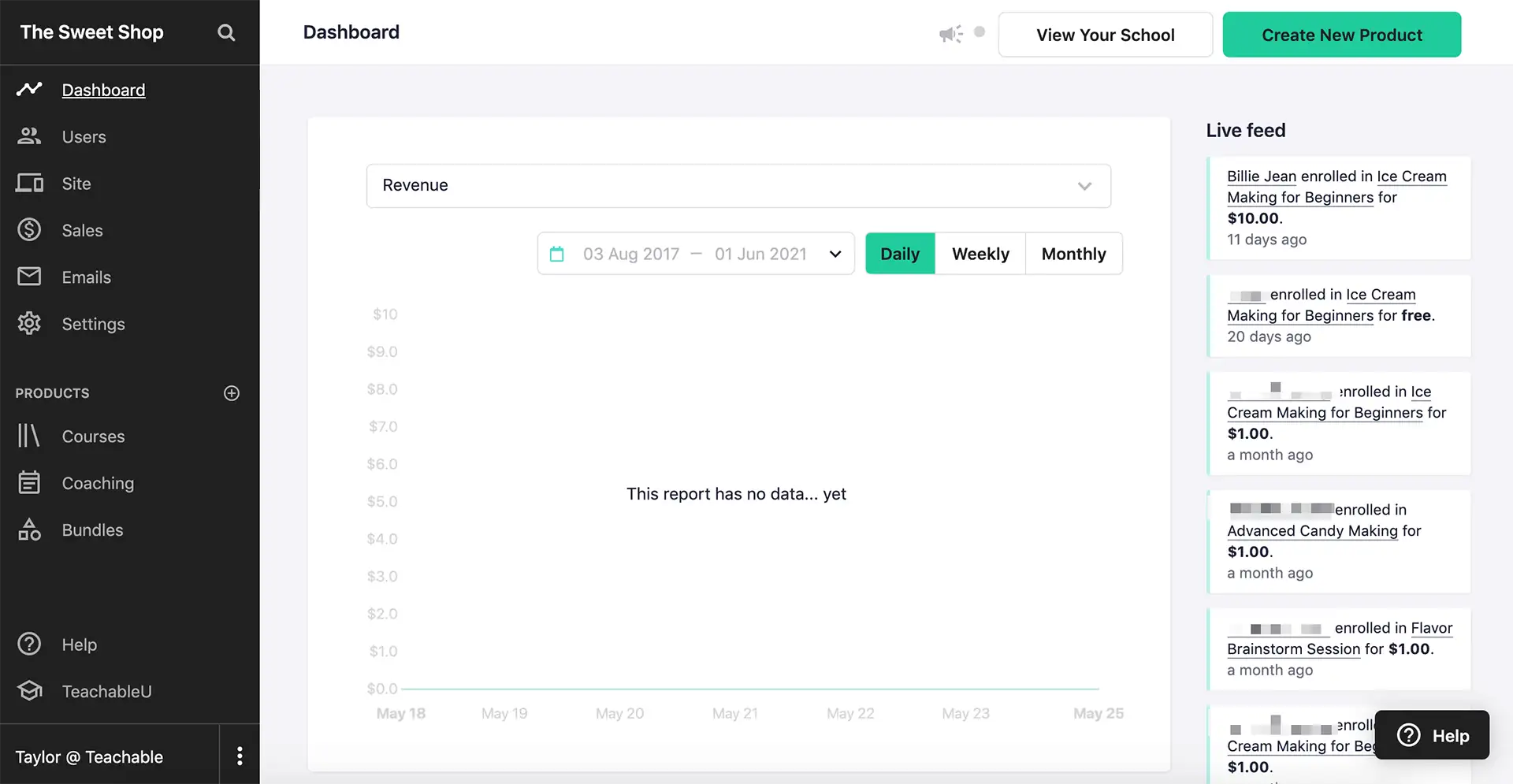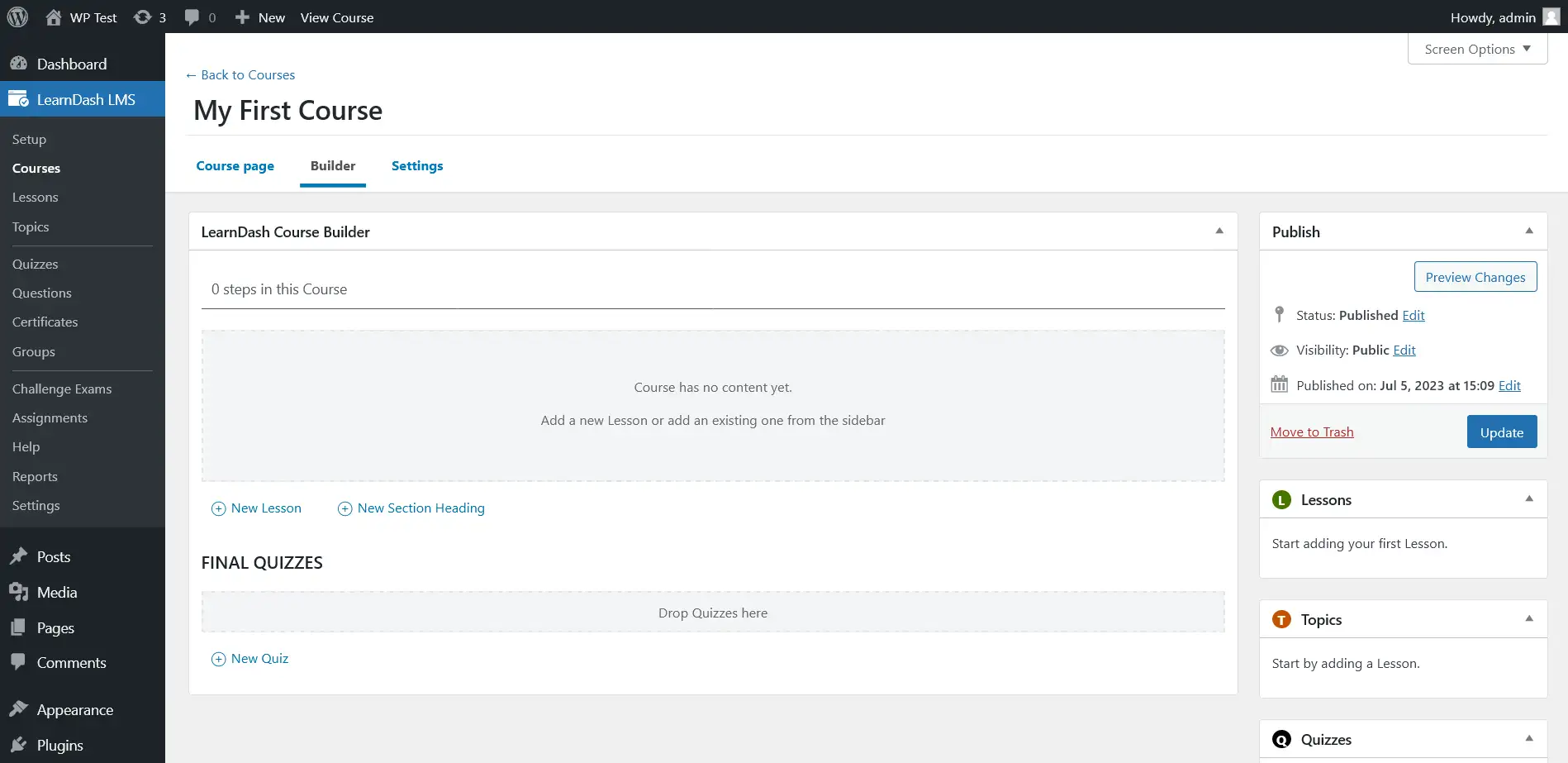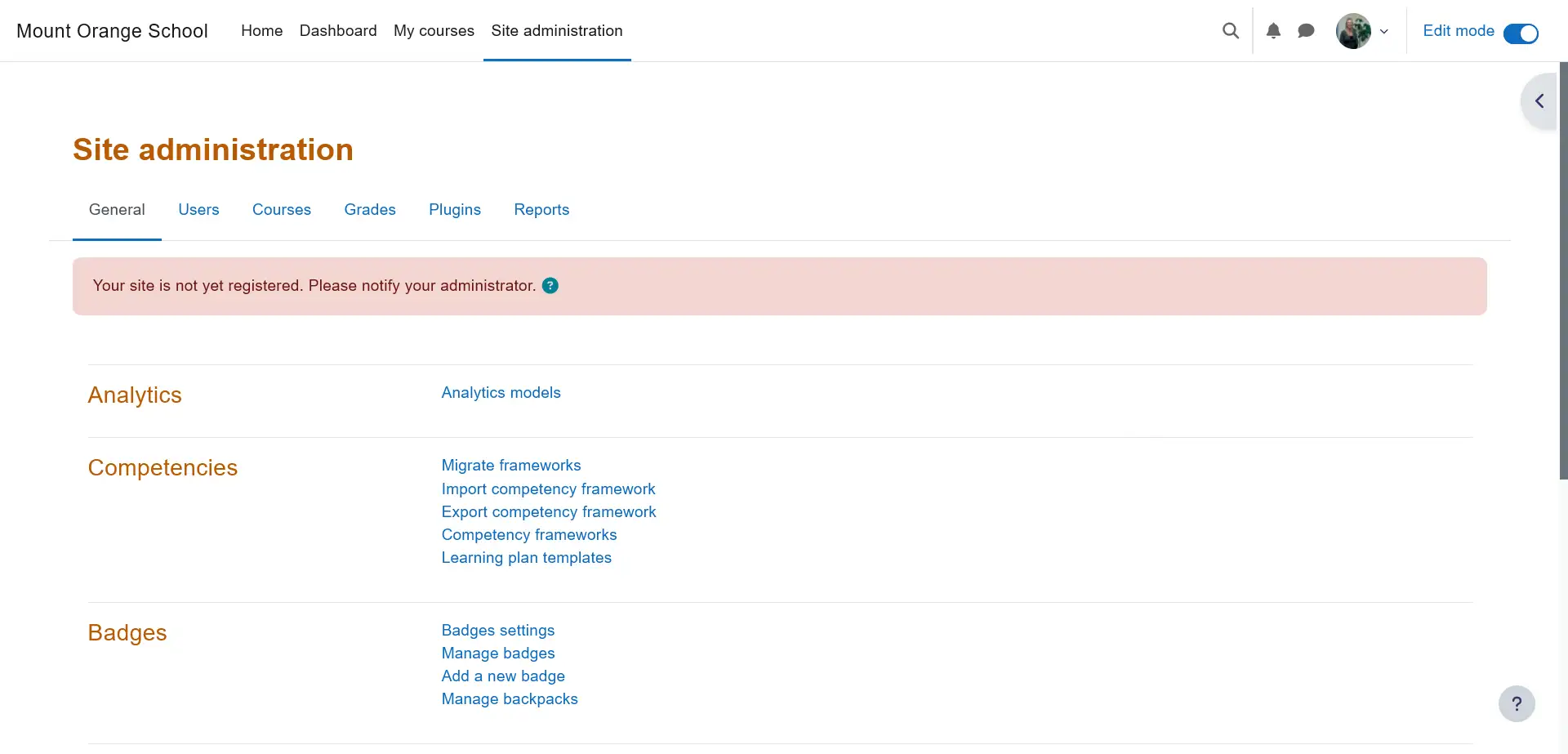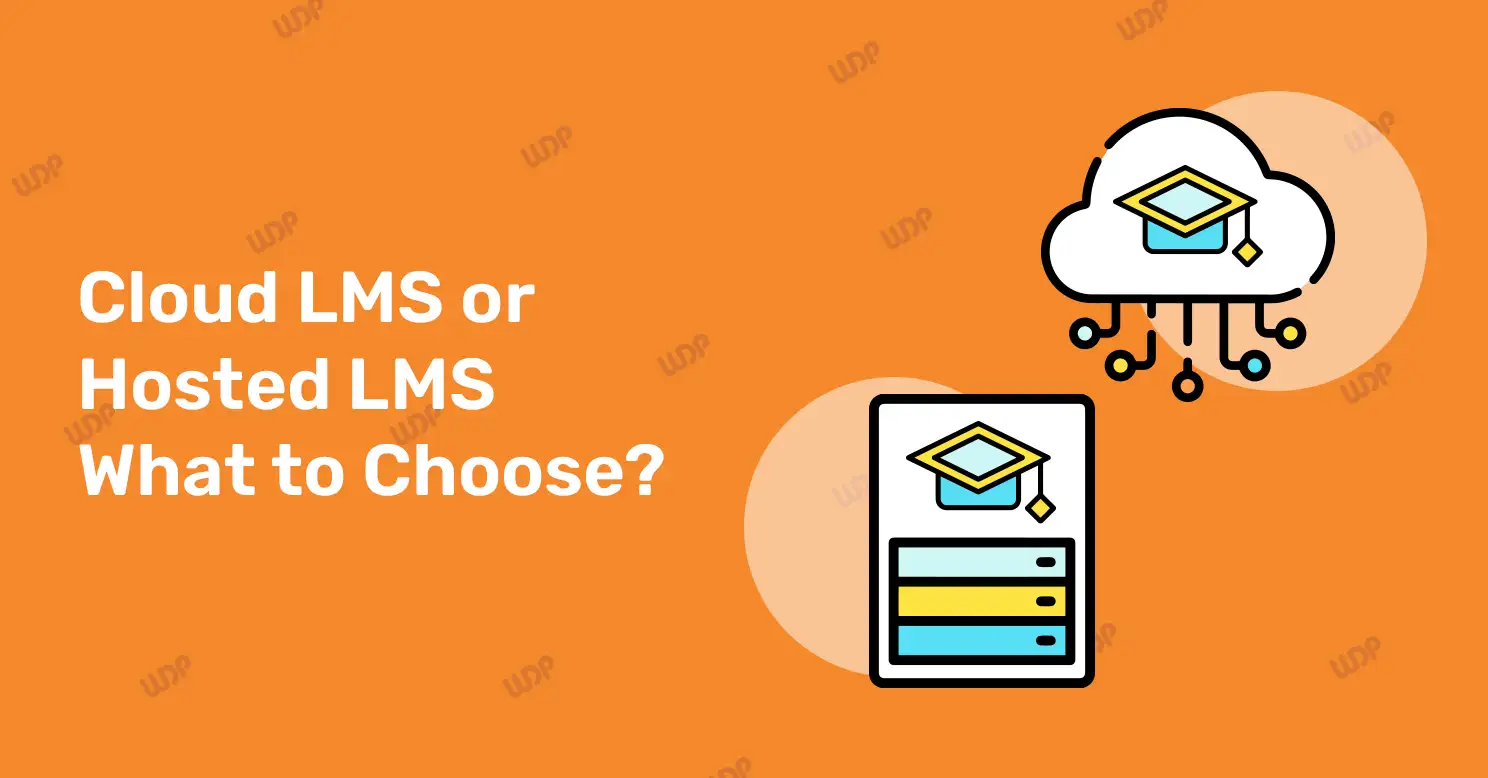Learning management systems (LMS) are employed extensively for distance learning nowadays. These systems became even more essential during the COVID-19 pandemic, with majority of educators saying that their learning management system improved student satisfaction and teacher productivity during those testing times.
But with the availability of so many solutions, selecting the right LMS is not easy. Not only does one have to think about its pricing and features, but ones also needs to know that there are different types of LMSs, which make their selection even more complicated.
So we research the two most popular types of LMSs, Cloud LMS and hosted LMS, to help make this clear. We'll talk about them in detail here, including their pros, cons, when to opt a solution and its top providers, so you can make an educated decision.
What is an LMS?
An LMS is a software application or online platform that is used to administer, distribute, and track educational courses, training programs, and learning content. It provides a centralized system for organizing and administering learning activities such as course creation and delivery, user enrollment management, tracking learner progress, and performance evaluation.
Content creation and management tools, user administration, course enrollment and registration, communication and collaboration tools, assessments and quizzes, grading and feedback systems, and reporting and analytics capabilities are common features of an LMS. It functions as a virtual learning environment in which instructors can create and share course materials, interact with students, and track their progress.
Learning management systems are widely utilized in a variety of educational settings, including schools, universities, corporate training programs, and online learning platforms. They simplify course delivery, allow for asynchronous learning (learning at one's own pace and schedule), and serve as a foundation for blended learning approaches that combine online and in-person training.
Advantages of LMS over traditional forms of learning
Learning Management Systems (LMS) provide a number of advantages to educational institutions, organizations, and students. Here are a few key advantages to adopting an LMS:
- An LMS provides a centralized platform for organizing, accessing, and managing all learning materials, resources, and activities. This makes it easier for teachers and students to locate and explore course content.
- Learning management systems (LMSs) allow learners to access course materials and participate in learning activities from anywhere and at any time, as long as they have an internet connection. This adaptability enables self-paced learning and meets the demands of people with varying schedules and geographical locations.
- LMSs frequently provide interactive and multimedia-rich content, including movies, simulations, quizzes, and discussions, that can improve the learning experience. Learners can interact with the information in a variety of ways, which improves learning and knowledge retention.
- LMSs provide methods for tracking learners' progress, such as monitoring course modules, assignments, and assessment completion. This enables instructors and administrators to collect statistics on student performance and identify areas where more assistance may be needed.
- Learning management systems can provide individualized learning experiences by recommending certain materials, modules, or activities depending on learners' interests, learning styles, or performance. Adaptive learning features can dynamically modify the content and difficulty level based on the progress of the learner and his or her specific needs.
- Discussion boards, chat features, and group projects are common communication and collaboration options in LMSs. These tools promote engagement and knowledge sharing by facilitating learner interaction, peer-to-peer cooperation, and instructor-student communication.
- Using an LMS can save money on venue rents, printed materials, and travel fees that would otherwise be incurred with traditional classroom-based training. Furthermore, LMSs automate administrative duties like course enrollment, grading, and reporting, saving teachers and administrators time and effort.
- LMSs are extremely scalable, allowing educational institutions and enterprises to handle an increasing number of learners without requiring major infrastructure investments. Courses are simply reproduced and can be offered to a large number of participants at the same time.
- Learning management systems include extensive reporting and analytics features that allow instructors and administrators to analyze student data, track trends, and generate reports on course performance and effectiveness. This data can help guide instructional design decisions and continual improvement activities.
What is a Cloud LMS?
A Cloud LMS, also known as a SaaS (Software As A Service) LMS is a learning management system that runs on a cloud computing infrastructure. In contrast to traditional LMSs, which require installation and maintenance on local servers, a Cloud LMS is hosted and managed by a third-party provider, with all data and functionality accessible over the internet. To begin using the LMS software application, one simply signs in to it. In addition, since the cloud LMS operates on a SaaS model, one normally pays a monthly or annual fee to use the software.
Following are the primary features and benefits of a Cloud LMS:
LMS is hosted in the Cloud
As its name suggests, LMS makes use of the cloud, meaning the software, data, and resources are housed on remote servers managed by the LMS/SaaS provider. Educators are not required to invest in and operate their own hardware infrastructure, and the software running on it.
Cloud LMS is highly accessible
A cloud LMS platform provides access to learning resources and activities at all times and from any location. Learners can access the LMS by logging into their account via web browsers or mobile apps.
Limitless scalability and quick resource allocation
Cloud LMS platforms offer seamless scalability to meet educators' diverse needs. As the number of learners and courses increase, the service provider automatically allocates more infrastructure resources, such as storage and processing capacity to meet the increased demand. This provides smooth performance and a positive user experience.
Automatic updates and maintenance
Application upgrades, bug patches, and system maintenance are handled by cloud LMS service providers and educators do not have to face disruptions or performance degradation in their learning environment.
Data security and backups are service provider's responsibility
To protect student data, cloud LMSs use robust safety measures like encryption, access controls, and regular backups. To protect data privacy and compliance with requirements like as the General Data Protection Regulation (GDPR), cloud LMS providers frequently have dedicated security teams that adhere to industry best practices.
Lower initial Costs, higher operational Costs
Cloud LMSs work on a subscription-based pricing model, in which educators pay for LMS consumption and enables them to quickly launch their courses and learning programs without spending too much upfront.
Easy integration and high compatibility with other systems
Cloud LMSs frequently include integration with other systems, such as HR software, CRM systems, or content creation tools. This allows for seamless data exchange, user management, and content sharing across platforms.
Easy collaboration and social learning
Social learning features such as community forums, chat, and collaboration tools are often included in cloud LMS platforms. Within these platforms, learners can interact with instructors and fellow learners, share knowledge, and collaborate on projects, encouraging engagement and establishing a feeling of community.
What is a Hosted LMS?
A hosted LMS, also called as self-hosted, self-deployed or on-premise LMS, refers to a Learning Management System that is installed and served from one's own servers. In this instance, the educator is responsible for its management and upkeep. Hosted learning management systems are usually available as WordPress plugins and open source software.
Following are the primary features and considerations of self-hosted LMS apps:
Local or self-hosted web installation
A hosted LMS is installed on the educator's own web servers or on-premise/local infrastructure. Setting up and configuring the software, including database installation, server configuration and network settings requires technical expertise.
High levels of control and customization
Hosted LMSs give educators and their organizations high degree of control and customization options over their application's functions. Educators can adapt the LMS to meet specific needs, integrate it with existing systems, and customize the user interface and app functionality to their specifications. This level of control allows for a highly personalized learning environment.
Data security and privacy
In a hosted LMS, educators have control over the security and privacy of learner data. However, this also means that educators must employ robust security measures to safeguard learner information. They also need to keep up to date with data protection laws and follow them diligently.
Maintenance and updates
Educators which employ a hosted LMS are responsible for ongoing updates, maintenance, and bug fixes. This includes monitoring system performance, implementing software patches, and keeping the infrastructure up to date. The educator's IT team also must have the requisite training to effectively manage and maintain the LMS.
High initial costs, Lower operational costs
While hosted LMSs might have greater upfront costs owing to infrastructure acquisition and licensing fees, they could prove cost-effective in the long run for educators with large user bases. That being said, the ongoing maintenance, support, and upgrade costs also need to be considered.
Scalability challenges
Hosted LMSs are very much scalable, but extra hardware and infrastructure expenditure is required to support increased demand and user base. To ensure performance does not degrade and to avoid system downtime when scaling, educators and their IT teams need to plan accordingly.
Integration challenges
Integrating a hosted LMS with other systems, like a HR software or content authoring tools, may require extra effort and technical knowledge. When there are no ready-made plugins available, custom programming might be required to provide seamless data exchange and compatibility between disparate systems.
A self-hosted LMS gives enterprises complete control, customization opportunities, and data protection, but it requires technical knowledge and regular maintenance. It is often selected by mid to large-sized organizations that prioritize infrastructure control and have the capacity to operate and maintain the LMS in-house.
Comparison Table: Cloud LMS vs Hosted LMS
| Cloud LMS | Hosted LMS | |
|---|---|---|
| Server infrastructure | Hosted in the cloud. Operated by cloud LMS provider. | Can be hosted locally or on the web. Provisioning of the infrastructure is your responsibility. |
| Infrastructure maintenance and updates | Automatic – carried out by LMS provider. | Manual – carried out by you or your IT team |
| Accessibility | Since hosted in the cloud, it can be accessed from anywhere on any device using web browser or app. | If hosted locally – can only be accessed on-premises.
If hosted on the web – can be accessed from anywhere on any device using web browser or mobile app. |
| Control and customization | Medium to low levels of control. Some parts of the app may be off-limits for customization. | High levels of control and customization is possible. |
| Data security and back up | Cloud LMS providers are responsible. They usually have dedicated teams which employ robust and latest security measures. They also are responsible to regularly back up the data. | Educator and their own IT team is responsible for data security and back up. |
| Data privacy | Responsibility of cloud LMS provider. Some elements of non-identifiable data may be used by them for app improvement, so it is important to go through their privacy policy before signing up. | You own your data. However, you are also responsible for ensuring compliance with any data privacy laws (GDPR, CCPA etc). |
| Cost considerations | Low initial costs. However operational costs may balloon up significantly as you start scaling up or use additional third-party add-ons / services like content authoring tools or HR software. | Higher initial costs, however operational costs may be substantially lower. |
| Scalability | Easier to scale as the infrastructure is provided by cloud LMS provider. | More challenging to scale as manual provisioning of additional hardware and regular usage monitoring may be required. |
| Integration and compatibility with other services/apps | Easier, as third-party services themselves develop and maintain plugins/add-ons. | Could be challenging due to lack of data exchange and interoperability plugins. Might even need to develop such plugins in-house. |
| Collaboration and social learning | Social learning features, such as community forums, chat and other collaboration and knowledge sharing tools are usually part of the cloud LMS | Such features may or may not be part of the self-hosted LMS app. Might need to use third-party pre-built apps or even need to develop them in-house. |
When should you choose a cloud LMS?
You should choose a cloud LMS if you want your learning program or course to launch quickly with a lower initial cost and want a reliable and efficient platform without the burden of infrastructure maintenance and management.
When should you choose a hosted LMS?
You should choose a hosted LMS if you prioritize control over your infrastructure, have the necessary resources to manage and maintain the LMS in-house, and want tighter controls over operational costs.
Recommended cloud LMS platform
Teachable

Teachable is currently one of the most used cloud learning management systems and is ideal for startups and small enterprises. Over 22,000 online educators, including the New York Times, use it. Moreover, Teachable enables Learnability, an eLearning marketplace that offers online training courses for designers such as Adobe Photoshop CC, Mobile Product Design: From Napkin to Launch, Design for Coders, and many more.
You can sign up for a free Teachable plan to decide if it's a good fit for you.
Teachable Features
- Create an unlimited number of courses for an unlimited number of students.
- Gain access eCommerce, affiliate marketing, email marketing integration, and other in-built tools.
- Contains course reviews, graded quizzes, progress tracking, coupons, drip course content, one-page checkout, among other features (some features are available on all plans).
- Begin with a free trial.
- There are three paid plans available, ranging from $39/month to $499/month (each with its own set of features).
- Teachable has their own payment processor through which they will pay you, your teachers, and your affiliates (payments are subject to transaction fees).
- Connect with Stripe or PayPal on $99/month and higher subscriptions to receive payments quickly.
Recommended hosted LMS
1. LearnDash (Wordpress plugin)

LearnDash is an easy-to-use yet powerful learning management systems out there. As it has been developed to run as a Wordpress plugin (aka the most widely used content management system) it is one of the most popular hosted learning management systems at this time. It’s used by over 75,000 websites (source: Builtwith.com) offering online courses. including University of Florida, Tony Robbins and Keap CRM.
LearnDash is perfect for individual educators, small to mid-sized organizations and especially those who have a Wordpress website.
LearnDash Features
- It supports unlimited courses and learners.
- Educators can easily create beautiful courses using the drag & drop course builder that match your brand, with no coding skill needed.
- Supports images, videos, audio, HTML5 content in courses. SCORM and xAPI are also supported through a 3rd-party paid add-on.
- Easily approve submissions, leave comments, award points, coupons, and gamify course content.
- Sell courses individually or with a recurring fee (subscription) at an interval of your choosing.
- Accept payment via Stripe (native support) or with any other payment gateway (through Woocommerce).
- Price starts from $199/site per year (around $16.6/month).
2. Moodle (Open Source)

Moodle is the leading open source online learning platform designed to provide educators, administrators and learners with a single robust, secure and integrated system to create personalized learning environments. It is entrusted by institutions and organizations large and small, including Shell, London School of Economics, State University of New York, Microsoft and the Open University. Over 150,000 websites worldwide (source: Moodle.org) use Moodle to impart courses and online learning.
Moodle Features
- Being open source, it is free with no-licensing fees.
- Has a simple interface with drag & drop course creation features.
- Supports images, videos, audio, HTML5 content in courses.
- From a few students to millions of users, Moodle can be scaled to support the needs of both small classes and large organizations. What you need is a web host which supports that scale.
Moodle is well-supported by an active community of developers and a network of certified Moodle Partners. Driven by open collaboration and community support, the project achieves rapid bug fixes and improvements, with major new releases every six or so months.
Where to host a self-hosted LMS?
Since course and learning websites serve different types of media, including images, audio and videos, and can attract large number of concurrent visitors, we recommend that they are hosted on reasonably robust web servers which can handle medium to large volumes of traffic. In addition, these web hosting companies must have a quick-responding, reliable customer support system which can resolve all types of hosting-related issues.
We recommend Pressable for hosting Wordpress-based LMS like LearnDash. Why? Because Pressable is owned and operated by Automattic, ie the guys who developed Wordpress. If that is not enough to convince you, they also provide top-notch hosting infrastructure and customer support.
And for hosting a non-Wordpress LMS like Moodle, we recommend Liquid Web Managed VPS. Liquid Web Managed VPS provides virtual private servers (VPS) with an easy-to-use control panel to install Moodle, have enough resources (vCPU, RAM, storage) to run a self-hosted LMS and great customer support.
